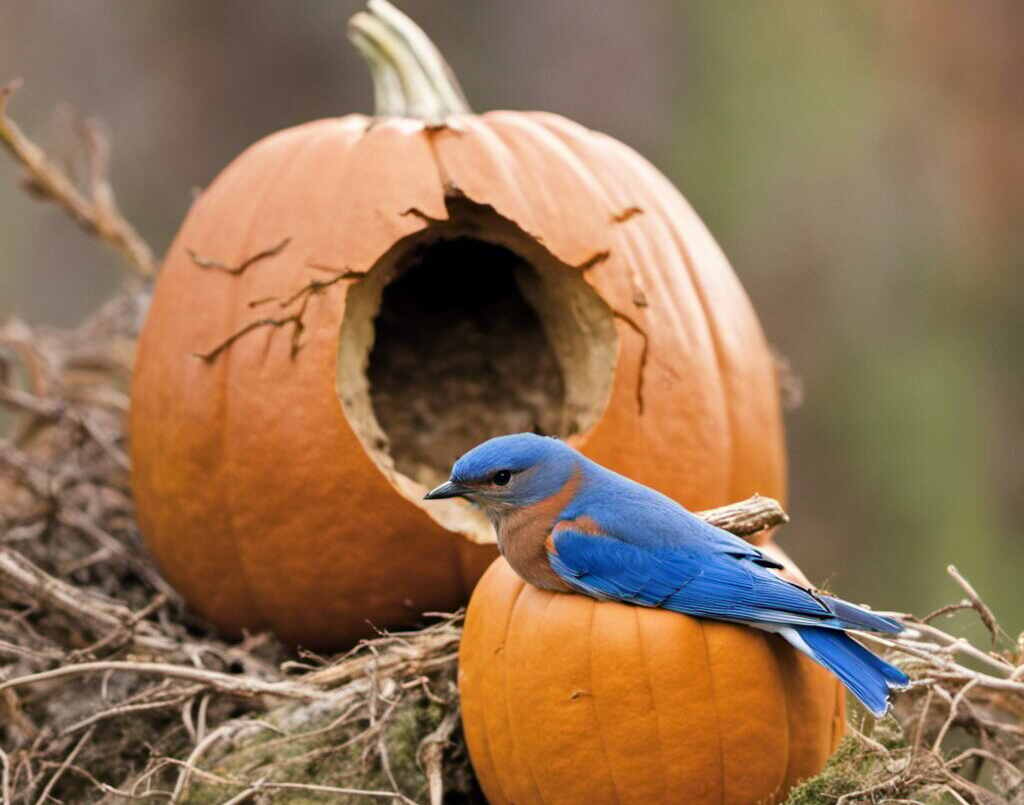Birds are known for making their homes in a variety of places, from trees to abandoned buildings to birdhouses. But did you know that gourds can also provide a unique habitat for birds? Gourds are a great option for those who want to attract and provide a safe space for native birds.
Table of Contents
- 1 Key Takeaways:
- 2 What Birds Live In Gourds?
- 3 Why Birds Choose Gourds as Nesting Sites
- 4 Common Bird Species That Nest in Gourds
- 5 Choosing the Right Gourd for Birdhouses
- 6 Preparing Gourds for Birdhouse Use
- 7 Attracting Birds to Gourd Birdhouses
- 8 Caring for Gourd Birdhouses
- 9 Benefits of Using Gourds as Birdhouses
- 10 DIY Gourd Birdhouse Ideas
- 11 Where to Find Gourds for Birdhouses
- 12 Conclusion
- 13 FAQs: What Birds Live In Gourds?
- 13.1 What types of birds live in gourds?
- 13.2 Why do birds choose gourds as nesting sites?
- 13.3 What are some common bird species that nest in gourds?
- 13.4 How do I choose the right gourd for birdhouses?
- 13.5 How do I prepare gourds for use as birdhouses?
- 13.6 How can I attract birds to gourd birdhouses?
- 13.7 How do I care for gourd birdhouses?
- 13.8 What are the benefits of using gourds as birdhouses?
- 13.9 Can you provide DIY gourd birdhouse ideas?
- 13.10 Where can I find gourds for birdhouses?
- 14 Author
Key Takeaways:
- Gourds can be used as unique homes for birds
- Gourds offer a safe and natural habitat for birds
- There are several bird species that commonly nest in gourds
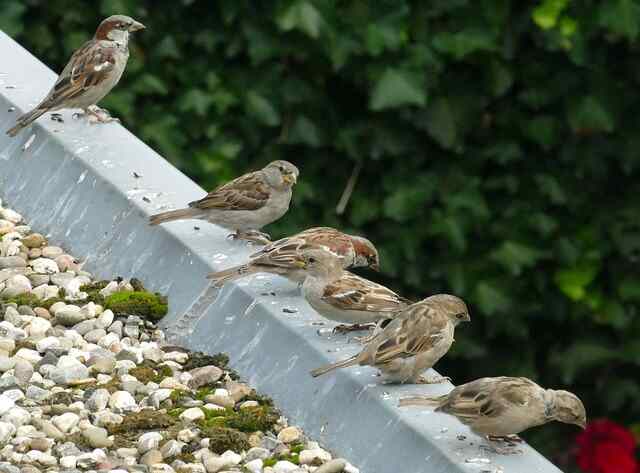
What Birds Live In Gourds?
Several species of birds live in gourds, including Purple Martins, House Sparrows, Chickadees, Bluebirds, Swallows, and some species of Finches. These birds will often hollow out a gourd to roost in it, then build a nest to raise their young. Gourds have been used as birdhouses for centuries, and are a popular choice among bird enthusiasts due to their natural and durable construction.
Why Birds Choose Gourds as Nesting Sites
Gourds have become a popular choice for birdhouses since the unique shape and size of these natural homes offer a variety of benefits that can attract birds. These benefits include:
- Size: Gourds come in different sizes, allowing a variety of bird species to have a comfortable nesting space.
- Shape: The natural shape of gourds is excellent for keeping out predators while providing good ventilation for young birds.
- Protection: Thick gourd walls provide excellent insulation for birds, protecting them from harsh weather conditions.
- Natural material: Gourds are an eco-friendly and natural material that blends well with outdoor environments.
Birds also prefer gourds as nesting sites because these homes are typically located away from high human traffic areas, providing the birds with peace and security. The unique and natural nature of gourds also makes them an ideal choice for bird conservation, since they help preserve the natural habitat of birds.
Common Bird Species That Nest in Gourds
While many bird species will take advantage of a well-made birdhouse, there are specific types of birds that are particularly fond of nesting in gourd birdhouses. These species tend to prefer the natural, cave-like shape and texture of gourds as a safe and cozy place to build their nests.
Here are some of the most common bird species that choose to nest in gourds:
| Bird Species | Nesting Habits |
|---|---|
| Purple Martin | Purple Martins are the most well-known gourd-nesting birds. They are highly sociable and prefer to nest in large colonies, making gourds a popular option for their communal living. |
| Tree Swallow | Tree Swallows are cavity nesters that prefer to build their nests in natural tree cavities or man-made birdhouses. They also thrive in gourd birdhouses due to their similar structure. |
| House Wren | House Wrens are known for their beautiful songs and their habit of building several nests in different locations to choose from. They will readily take to gourd birdhouses, as long as they are placed in quiet, sheltered spots. |
| Eastern Bluebird | Eastern Bluebirds are a favorite among bird enthusiasts due to their bright and cheerful plumage. They are territorial birds that prefer to nest in open fields, making gourd birdhouses an ideal option for their habitat. |
Gourd birdhouses come in various shapes and sizes, making them suitable for different bird species. Choosing the right gourd is an important factor in attracting the right birds to your backyard. In the next section, we will explore how to choose the right gourd for birdhouses.

Choosing the Right Gourd for Birdhouses
When selecting a gourd for use as a birdhouse, there are several factors to consider to ensure the best results. The following guide will help you choose the right gourd for building birdhouses:
| Factor to Consider | Importance | Recommended Gourd Type |
|---|---|---|
| Size | Important | Crown of Thorns gourd |
| Shape | Important | Tennessee Spinner gourd |
| Thickness | Important | Bottle gourd |
| Durability | Important | Dipper gourd |
| Appearance | Optional | Winged gourd |
Size is a crucial factor when selecting a gourd for birdhouses. A gourd that is too small will not provide enough space for birds to nest, while an oversized gourd may attract predators to the birdhouse. The Crown of Thorns gourd is an ideal size for most bird species and offers ample space for nest building.
Shape is equally important, as it can influence the placement and stability of the birdhouse. A gourd with a curved, elongated shape, such as the Tennessee Spinner, provides a stable base for birdhouse construction and is preferred by many bird species.
The thickness of the gourd wall is another crucial consideration. A thin-walled gourd may not provide adequate insulation for nesting birds, while a gourd with a thick wall may be difficult to work with and may take longer to dry. The Bottle gourd strikes a balance between thickness and workability, making it a popular choice for birdhouse construction.
Durability is also important, especially if you intend to reuse the birdhouse for multiple nesting seasons. The Dipper gourd is known for its durability and can withstand harsh weather conditions, making it an excellent choice for long-lasting birdhouses.
While appearance is not essential, you may want to choose a gourd that complements your outdoor decor. The Winged gourd, with its distinctive wing-like shape, can add a unique touch to your backyard and is a favorite among many birdhouse builders.
Choosing the right gourd will help ensure that your birdhouse provides a safe and comfortable nesting site for birds. Consider the factors outlined above, and you’ll be on your way to building a beautiful and functional gourd birdhouse.
Preparing Gourds for Birdhouse Use
Gourds make great natural birdhouses, but before hanging them up, they require some preparation. Here are the steps to follow when getting your gourds ready for birdhouse use:
- Harvest the gourds: Pick the gourds when they are mature and dry, typically in the fall.
- Wash the gourds: Scrub the outside of the gourds with warm soapy water to remove dirt and debris.
- Dry the gourds: Allow the gourds to air dry in a warm, well-ventilated area for several weeks.
- Check for mold: Examine the gourds for any signs of mold or decay before proceeding. Discard any gourds that show signs of damage.
- Sand the gourds: Use sandpaper or a wire brush to smooth out the exterior of the gourds.
- Make the entrance hole: Use a drill or knife to cut an entrance hole on the side of the gourd, making sure it is the appropriate size for the bird species you are trying to attract.
- Clean the interior: Remove the seeds and pulp from inside the gourd using a spoon or scraper.
- Disinfect the gourd: Soak the gourd in a solution of one part bleach to nine parts water for up to 30 minutes to kill any bacteria or fungi that may be present.
- Rinse and dry: Rinse the gourd thoroughly with water and let it dry completely before hanging it up.
Following these steps ensures that your gourd birdhouses will be clean, safe, and ready for your feathered friends to move into.
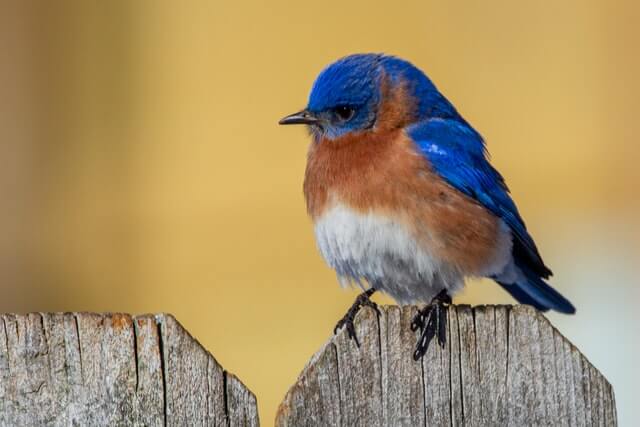
Attracting Birds to Gourd Birdhouses
Once you have prepared your gourd birdhouses, the next step is to attract birds to your unique homes. Here are some tips and strategies to help you:
- Proper Placement: Place your gourd birdhouses in areas that are naturally appealing to birds, such as near trees, shrubs, or other natural cover. Birds also prefer quieter areas with less foot traffic.
- Food Sources: Attract birds by offering food sources nearby. Hang a birdfeeder or set up a birdbath close to your gourd birdhouses.
- Seasonal Considerations: Different birds prefer different nesting sites and seasons. Research the nesting habits of the bird species you want to attract, and adjust the placement and timing of your gourd birdhouses accordingly.
- Multiple Gourd Birdhouses: Provide several gourd birdhouses in the same area to create a “bird neighborhood”. Birds tend to nest in proximity to other birds of their species.
- Decorative Touches: Paint or decorate your gourd birdhouses to blend in with the surrounding environment and make them more attractive to birds.
With these simple strategies, you can entice a variety of bird species to make their homes in your unique gourd birdhouses.
Caring for Gourd Birdhouses
While gourd birdhouses are low-maintenance, a little care goes a long way in ensuring their longevity and continued use by birds. Here are some general guidelines for caring for your gourd birdhouses:
| Task | Frequency |
|---|---|
| Cleaning | At least once a year, after nesting season |
| Repairing | As needed |
| Monitoring | Regularly, especially during nesting season |
Cleaning is essential in maintaining gourd birdhouses. After nesting season, remove any nesting materials and debris from the gourd using a soft-bristled brush or cloth. Do not use harsh chemicals or solvents, as they can harm birds and damage the gourd. Instead, rinse the gourd with mild soap and water, and allow it to air dry completely before sealing it.
Repair any cracks, holes, or other damage to the gourd using wood putty or other suitable materials. Check the gourd periodically during nesting season for any signs of wear and tear, and make repairs as needed.
Monitoring the gourd is important both for maintenance and for observing bird activity. Check the gourd regularly for signs of nesting activity, such as birds entering and exiting the gourd or bringing in nesting materials. Keep in mind that disturbing nesting birds is illegal and can harm their eggs or chicks.
By following these care guidelines, your gourd birdhouses can provide a safe and comfortable home for birds for years to come.
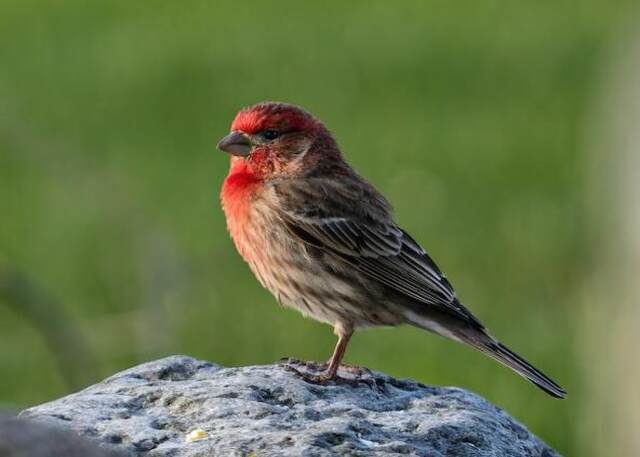
Benefits of Using Gourds as Birdhouses
Gourds have been used as natural birdhouses for centuries, and for good reason. Apart from their unique and aesthetically pleasing shape, gourds provide various benefits for both birds and the environment. Here are some advantages of using gourds as birdhouses:
- Natural Material: Gourds are a natural and eco-friendly option for birdhouses, which means they do not harm the environment. Unlike plastic or synthetic birdhouses, gourds do not contain harmful chemicals or materials that can harm birds or the ecosystem.
- Gourds are easily customizable and can be decorated or designed to suit different bird species or preferences. You can paint, carve, or decorate your gourd birdhouse to attract specific birds or create a personalized look.
- Gourds have natural ventilation, which prevents overheating and keeps birds comfortable. The natural shape of gourds allows for adequate airflow, eliminating the need for additional ventilation systems.
- Gourds are a durable option for birdhouses, and can last up to 5 years or more when properly maintained. This is because the hard outer shell of gourds protects them from external factors such as weather and predators.
- Gourd birdhouses provide a safe and secure nesting environment for birds. Due to their hard exterior and natural thickness, gourd walls act as a barrier against predators and harsh weather conditions, protecting the eggs and hatchlings inside.
- Using gourds as birdhouses promotes bird conservation efforts, as it provides a suitable alternative for birds to nest in urban and suburban environments. It also helps maintain healthy bird populations, as providing suitable nesting environments helps reduce nest failure rates.
DIY Gourd Birdhouse Ideas
If you’re looking to add a personal touch to your birdhouses, DIY gourd birdhouses are the perfect project for you. Gourds offer a unique and natural material to work with, allowing for endless creative possibilities. Here are some inspiring ideas to get you started:
Gourd Village Birdhouse
Create a charming village of gourd birdhouses by stacking and connecting different-sized gourds with wooden dowels. Cut out openings for the birds and decorate with paint or wood-burning tools.
Gourd Condo Birdhouse
For the ultimate birdhouse complex, try creating a gourd condo by attaching multiple gourds together with wood or wire. Cut out openings and add perches for the birds to rest on.
Gourd Fairy Garden Birdhouse
Turn a gourd birdhouse into a magical fairy garden by adding miniature furniture, plants, and accessories. Use paint or markers to decorate the gourd with whimsical designs.
Gourd Owl Birdhouse
Transform a large gourd into an adorable gourd owl birdhouse by adding ears, eyes, and a beak made from wood or clay. Use paint or feather accents to add texture and detail.
Gourd Teapot Birdhouse
Repurpose a teapot-shaped gourd into a unique and whimsical birdhouse. Cut an opening for the bird and decorate with paint or decoupage to resemble a vintage teapot.
Gourd Cottage Birdhouse
Create a cozy and quaint cottage birdhouse by decorating a gourd with paint or stenciling. Use twigs or small branches to create a thatched roof and add a miniature birdhouse sign.
With these creative DIY gourd birdhouse ideas, you can make a one-of-a-kind home for your feathered friends. Whether you’re a seasoned crafter or just starting, gourd birdhouses are a fun and rewarding project that will add natural charm to your backyard.
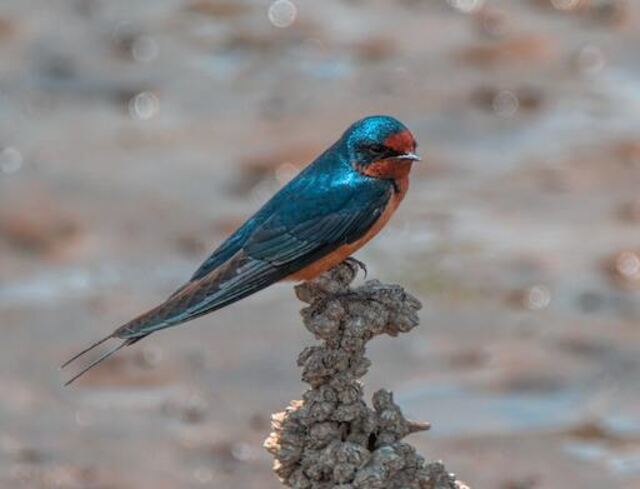
Where to Find Gourds for Birdhouses
If you’re looking to build a gourd birdhouse, choosing the right gourd is crucial. Fortunately, there are many options available, including purchasing gourds from local farms or nurseries or buying them online from various retailers. You can also grow your own gourds at home, which is a fun and rewarding experience.
If you’re interested in purchasing gourds, start by searching for local farms or nurseries that specialize in gourd production. These establishments often have a wide selection of gourds available, including birdhouse varieties.
You can also search online for gourd retailers, which offer a range of sizes, shapes, and colors to choose from. When buying online, be sure to read reviews and check the seller’s reputation to ensure quality and reliability.
Another option is to grow your own gourds. This is a great way to ensure that you have fresh, high-quality gourds that are perfect for birdhouses. There are many different types of gourds that make great birdhouses, including bottle gourds, kettle gourds, and birdhouse gourds.
You can easily grow your own gourds by planting them in your garden or in containers, and then harvesting them once they have matured. Keep in mind that growing gourds can be a time-consuming process, so be sure to start early and be patient.
Conclusion
Gourds have proven to be a unique and attractive option for birds seeking nesting sites. Their natural durability, varied sizes and shapes, and eco-friendly qualities make them a perfect alternative to traditional birdhouses.
By understanding the benefits of using gourds for birdhouses and following a few simple steps, anyone can create a safe and inviting habitat for birds in their backyard. Whether you choose to purchase pre-made gourd birdhouses or choose to craft your own, the possibilities are endless.
Join the Movement
Join the growing number of bird lovers who are finding new and creative ways to provide homes for these feathered friends. By using gourds as birdhouses, we are not only providing birds with a safe and comfortable home, but also contributing to the conservation of bird species.
So why not give it a try? Whether you’re an experienced bird enthusiast or just starting out, using gourds as birdhouses can provide endless fascination and enjoyment in watching and nurturing these wonderful creatures.

FAQs: What Birds Live In Gourds?
What types of birds live in gourds?
Various bird species can live in gourds, including purple martins, tree swallows, eastern bluebirds, and wrens.
Why do birds choose gourds as nesting sites?
Birds choose gourds as nesting sites because they offer protection from predators, provide a cozy and secure space for raising their young, and have natural insulating properties.
What are some common bird species that nest in gourds?
Some common bird species that nest in gourds are purple martins, tree swallows, eastern bluebirds, wrens, and chickadees.
How do I choose the right gourd for birdhouses?
When selecting a gourd for birdhouses, consider its size, shape, durability, and weight. Look for gourds with a smooth surface and a sturdy handle for hanging.
How do I prepare gourds for use as birdhouses?
To prepare gourds for use as birdhouses, clean them thoroughly, dry them completely, and seal them with a natural finish to protect against weather and pests.
How can I attract birds to gourd birdhouses?
You can attract birds to gourd birdhouses by placing them in suitable locations, providing food sources such as bird feeders and water baths, and creating a safe and inviting environment.
How do I care for gourd birdhouses?
Caring for gourd birdhouses involves regular cleaning, repairing any damage, and monitoring for bird activity to ensure the houses are in good condition for nesting.
What are the benefits of using gourds as birdhouses?
Using gourds as birdhouses offers natural and eco-friendly housing options for birds, promotes bird conservation efforts, and adds a unique and decorative element to the garden.
Can you provide DIY gourd birdhouse ideas?
Absolutely! Here are some creative DIY gourd birdhouse ideas: – Painted gourd birdhouses with intricate designs – Carved gourd birdhouses with unique patterns – Hanging gourd birdhouses with decorative strings or ropes – Stacked gourd birdhouses to create a multi-level bird village
Where can I find gourds for birdhouses?
Gourds for birdhouses can be found at local farms, nurseries, craft stores, and online retailers. You can also grow your own gourds by purchasing gourd seeds or seedlings.

